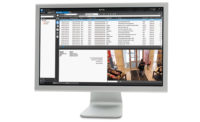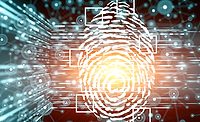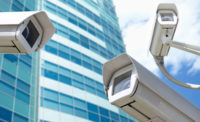Cheap wine in expensive bottles – it’s one illegal way that counterfeit wine sales are taking place. A fraudster perfectly packages cheap imitation wine into the bottle of an expensive wine with all the packaging and labeling intact. A consumer wouldn’t know, and wine sellers were hard pressed to obstruct such fraud.
Thanks to RFID technology, things are changing, and such fraud is much more difficult. An RFID capsule may be fitted over the corked or capped wine bottle. The capsule contains a unique identification number to authenticate the bottle of wine. It uniquely identifies the bottle to the wine and ensures the bottle has not been tampered with and the product is genuine.
It’s just one of the multitude of ways that RFID is being used to build security and change the course of our lives. While the technology is nothing new, its applications are many, driving the demand for this technology nowhere but up.
According to research conducted by BCC Research, the global market for RFID technologies is forecast to reach $38.0 billion by 2021. This will be from $16.2 billion in 2016, and grow at a compound annual growth rate of 18.6 percent, during that timeframe. In the mean time, the technology is making major inroads into many different market verticals with various uses – from track and trace solutions, to asset control and management as well as authentication and fraud prevention, among them.
Retailers are using RFID technology extensively as a means of controlling inventory loss and expediting point-of-sale (POS) checkout. New York-based Rebecca Minkoff apparel and accessories, is utilizing RFID in its boutiques for self-checkout, much like a supermarket or big box store.
“Retailers are adopting RFID at amazingly fast rates – the cost per item to tag, along with the monitoring hardware for retail stores and distribution centers is very affordable,” says Keith Jelinek, Managing Director at the Berkely Research Group in Los Angeles, CA. “This is a very offensive technology – instead of the traditional method of frequently inventorying product to then determine where there might be a loss, product can be rolled-up financially by location at any point in time. This can be compared to POS data to determine if product was sold, or, was removed via theft. The same technology has another benefit, in that retailers are using it to monitor what is on the sales floor, and what is in the stockroom, to enable real time restocking opportunities.”
Luxury goods and retail merchandise have a long history of not only theft and pilferage, but also fakes and forgeries. Vulnerable buyers are interested in products because of their attractive price – attractive because it is a fake. RFID tags prevent this and are being widely used as a tool for not only theft, but also anti-counterfeiting. They are used to authenticate products and prevent loss.
Retailer Maria&Donato is incorporating SpeedTap tags into their luxury handbag lines as a means of providing simple, yet effective, product authentication funtionality to their customers, says Bill Cummings of ThinFilm in San Jose, CA. The company makes RFID tags. Barbadillo, a leading Spanish winemaker, incorporated OpenSense tags into the bottles of a limited-edition run of its Versos sherry as a way to prevent tampering and authenticate the product. ThinFilm is in discussions with a number of other leading brands that are interested in its technology for authentication and anti-counterfeiting purposes. These companies represent a number of vertical industries, including tobacco, pharmaceuticals, cosmetics, and specialty foods such as olive oil, caviar and chocolate.
RFID and Intelligent Identity
RFID, in conjunction with other technologies, is becoming a very effective tool for smart authentication and identification of not just products and goods, but also people.
HID Global, who provides identity solutions, predicts that 2017 will be the year that the digital identity transformation leads a number of key trends, including mobile adoption credential issuance and management via the cloud, and innovative IoT. Digital identities that are used with RFID readers are poised to make trusted access and other physical and online interactions more personal, contextual and valuable.
The technology can be combined with other technologies such as cloud computing, mobile technology, biometrics and IoT for great impact. Other technologies include biometrics, where face recognition, thumbprints and other recognition technology can be utilized in conjunction with RFID for maximum security. It provides a whole new layer of security that allows very strict authentication linked to unique identity, where such identity is available.
RFID works best for security applications when combined with another measure such as biometrics, says Mark Brown of GlobeRanger, a company that provides IoT platforms that work in conjunction with RFID. It can usually be thought of as a way to determine presence rather than identity; if someone pickpockets your RFID-enabled badge, they are suddenly ‘‘you’’ unless there is a multimodal authentication regimen in place, he notes. Therefore, as a standalone solution, it’s premature to utilize RFID technology as a true security application in most cases.
Like its interaction with biometric technology, RFID may also be used in conjunction with IoT. The intelligence of an RFID tag or chip can be detected and monitored using the internet. This unveils many new opportunities for the technology as it may allow monitoring and control of so many different assets from anywhere in the world, by others anywhere in the world.
According to Mark Brown of GlobeRanger, RFID can be useful as a means of verifying identity. He notes that he’s done work for a client with operations in a remote part of Canada where cellular reception is limited to around two hours per day, making cloud-based biometric security measures virtually impossible. Their employees are given RFID-enabled badges with enhanced memory that pull up their photo – from the tag, not a connected system – on a computer screen when scanned for physical conformation.
According to HID Global, IoT presents better ways to connect people with things. Their outlook is that digital identities will increasingly be employed to help secure, customize and enhance the user experience across a growing range of industry segments and use cases. They will also help streamline processes with real-time location systems, condition monitoring and other capabilities. For instance, demand will grow for cloud-based authentication platforms that add trust to “proof of presence” and Internet of Things (IoT) applications. The ability to simply tap a phone to a trusted tag to prove you were there and have completed assigned tasks will have a profound impact on how people do their jobs and manage complex processes from remote locations using inherent speed, flexibility combined with mobile technology.
HID Global’s RFID is used by Datawatch Corporation, whose access control offers an example of how RFID readers used with mobile access technology are merging with the IoT in the smart building. Using mobile access technology helps facility managers efficiently control HVAC systems based on a person entering or exiting a suite or common area using a mobile ID. The HVAC and energy management systems will automatically adjust the settings, for example, turning off lights when the last person leaves the area. Datawatch has deployed HID Mobile Access and its RFID readers for building entry and access to internal doors, including common building areas, elevators, individual suites and apartments at nearly 30 commercial properties in major cities.
For Datawatch as well as the Canadian client of GlobeRanger in a remote location, RFID-based security makes sense for them. What’s unique is its speed and flexibility notes Brown. When the priority is completing a transaction as quickly as possible, RFID is a good choice since the result is nearly immediate, he says. As far as flexibility, it’s possible to do things like adjusting the detection range and integrating other databases. For example, you can link to a training database to quickly determine which employees have completed certain training courses, thereby identifying which ones are permitted to work on elements of a project that require special skills, or identifying which certifications have lapsed out of date literally to the minute.
In addition to remote location, RFID is a fitting solution for dispersed clients or employees in multiple locations. For workers who need to access their desktops from multiple locations, incorporating NFC or RFID along with another security check such as PIN code or biometrics allows them to do so on shared computer terminals, extending their access rights while combining these with local resource availability, says Brown.
Moving forward, RFID will only become more intelligent, more personal and more omnipresent.
At first, RFID was usually employed to track items in warehouses and other such large-scale applications, says Brown. While these kinds of applications are sure to continue, we’ve also seen a recent trend toward making the technology more personal. Today, if you lose your keys, the RFID tag attached to them will send a message directly to your phone to let you know exactly where they are through crowd sourced intelligence. Things like this will only become more ubiquitous and personal as the technology matures further.









